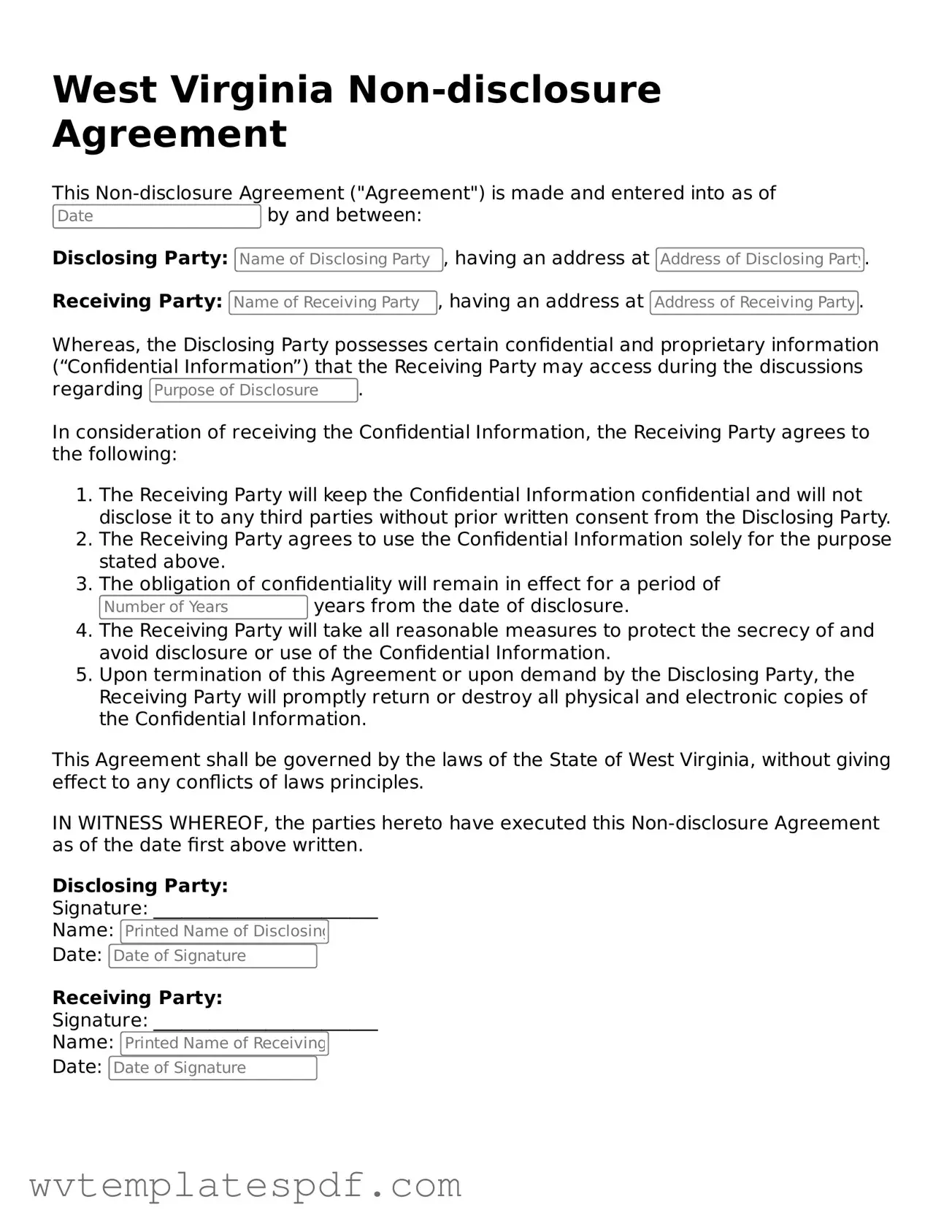Attorney-Verified West Virginia Non-disclosure Agreement Template
A West Virginia Non-disclosure Agreement (NDA) is a legal document designed to protect confidential information shared between parties. This agreement ensures that sensitive data remains private and is not disclosed to unauthorized individuals. Understanding the importance of an NDA can help safeguard your business interests and personal information.
Open Editor Now
